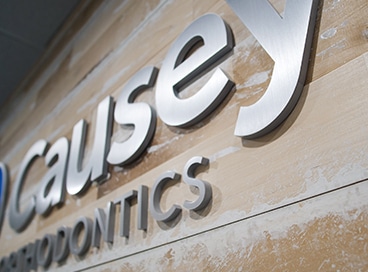The Only Guide to Orthodontics
The Only Guide to Orthodontics
Blog Article
The 30-Second Trick For Orthodontics
Table of ContentsThe Only Guide to OrthodonticsSome Ideas on Orthodontics You Need To KnowWhat Does Orthodontics Mean?A Biased View of OrthodonticsNot known Factual Statements About Orthodontics Examine This Report on OrthodonticsThe Buzz on Orthodontics
You may really feel some discomfort for some time when your braces are first placed on and when they are changed. It will take a little time to obtain used to your braces and they can bother your lips and cheeks - Orthodontics. If this takes place, a relief wax can be related to your bracesIt is very important to comb your dental braces as well as the front, back and chewing surface areas of the teeth. Your dental professional or orthodontist will certainly give you ideas on how to comb and on exactly how to floss utilizing floss threaders. After flossing, roll it up in a small sphere and placed it in the waste.
Moms and dads must oversee their youngsters to make certain they do a good job cleansing their teeth and dental braces and adhere to the suggestions of their dentist or orthodontist. If you have braces, do not attack on hard things such as ice and nuts. Do not eat the ends of pens or pencils.
The Buzz on Orthodontics
Issues that are not taken care of can cause the treatment to last longer. The conventional metal dental braces, there are tooth-coloured ceramic dental braces that are less obvious. Dental braces and elastics can also be multicoloured.
It guides the direction of tooth motion and jaw development in a person who is still growing. There are various kinds of headgear and they may be worn during any type of part of the orthodontic treatment. Your orthodontist or dentist will certainly show you how to place on the headgear and inform you how much time to use it every day.
Orthodontics - An Overview
They might need to be put on at all times or component of the time. Tooth elimination may be required if your teeth are crowded or if a tooth is badly out of position. Jaw surgery (or orthognathic surgical treatment) may be required when there are significant differences in the dimension or placement of the upper and lower jaws.
An orthodontist is a dental professional educated to identify, protect against, and treat teeth and jaw abnormalities. They remedy existing conditions and are educated to recognize troubles that might create in the future. Orthodontists deal with people of all ages, from youngsters to adults. People often connect an excellent smile with healthiness.
Indicators on Orthodontics You Should Know
All orthodontists are dental practitioners, however not all dental experts are orthodontists. Orthodontic residency programs provide intensive, concentrated guideline for oral professionals. They focus on 2 areas: How to properly and safely relocate teeth How to appropriately guide development in the teeth, jaw, and faceOnce an orthodontist has actually finished training, they have the option to end up being board licensed.
The Basic Principles Of Orthodontics
If you have just small malocclusion, you may be able to utilize clear braces, called aligners, rather than standard braces. Some people require a headgear to help relocate teeth right into line with stress from outside the mouth. After dental braces or aligners, you'll need to wear a retainer. A retainer is a customized tool that keeps your teeth in area.
They're usually utilized on children. They can create added area in the mouth without needing to draw teeth. If you have a significant underbite or overbite, you may my explanation require orthognathic surgery (also called orthodontic surgical procedure) to extend or reduce your jaw. Orthodontists utilize cables, surgical screws, or plates to sustain your jaw bone.
4 Simple Techniques For Orthodontics
An orthodontist is concentrated on your bite, so something like a cracked tooth would be dealt with by a dental expert. Orthodontists are focused on your bite, or the method your teeth fit together, and the straightness of your teeth.
An attractive smile can be a terrific possession. It makes you feel great and assists you create connections with your peers. One of the indications of a beautiful smile is a healthy collection of teeth and great oral wellness. Nevertheless, lots of people have gapped, misaligned, uneven teeth that can make them imperfect.
Not known Facts About Orthodontics
Attending to orthodontic issues at an early stage can additionally protect against complications like jaw pain and gum tissue illness, ensuring long-lasting oral wellness. Orthodontic therapy is known for its capacity to change smiles, yet its advantages prolong beyond simple visual appeals (Orthodontics). From cultivating much better oral wellness to increasing self-worth, can profoundly affect people' lives. Several of these advantages are: One of the considerable orthodontic devices is that it initiates a transformative procedure past tooth alignment.

These adjustments are vital for keeping progression and making certain the treatment remains on track according to the recognized plan. The orthodontist develops a personalized treatment plan based upon the diagnostic records and the person's special requirements and choices. This strategy describes the suggested action to resolve the determined orthodontic problems and accomplish the wanted outcome.
Report this page